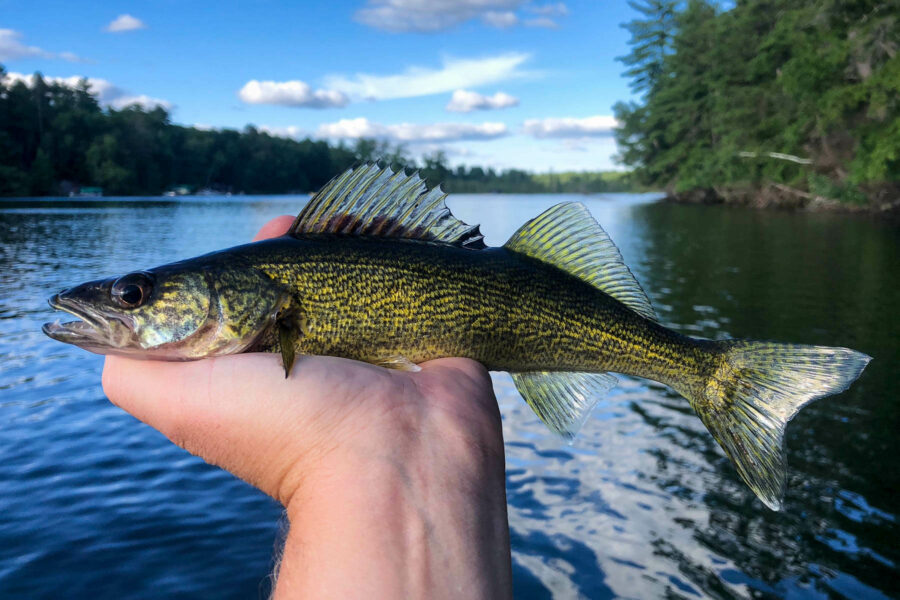Non-native fish a welcome sight in Chesapeake waterways
The walleye provides a tasty treat for anglers

One of the Chesapeake Bay’s best tasting fish is the walleye. For over a century, these freshwater fish have been captivating anglers and inspiring flavorful recipes across the Bay watershed. Despite their range and popularity, walleye are actually a nonnative species.
The walleye (Stizostedion vitreum) is the largest member of the perch family. It is native to Canada and the northern United States and was intentionally introduced into the Bay watershed in the late 1800s for sport and as food. Once established, walleye rapidly developed a reputation as one of the tastiest fishes in the region.
The walleye is named for its opaque, cloudy eyes. The strange color is caused by a reflective layer of pigment called the tapetum lucidum, which helps walleye see in low-light conditions. At night, walleye travel to shallow water and use their keen eyesight to hunt for prey. During the day, however, walleye can be found in deeper bodies of water and under vegetative cover where the light is less harsh on their sensitive eyes.
Unlike some species of non-native fish, such as snakeheads or blue catfish, walleye are not considered invasive species. Ecosystems where walleye have been introduced typically remain stable, with little negative impact reported. This is likely because the walleye’s popularity as a tasty food fish maintains their population at sustainable levels.
How to catch a walleye
- Fish in the evening. Because walleye are primarily nocturnal, you are most likely to catch one after sunset. They can usually be found in shallow, gravelly areas.
- Fish in the spring. While you can catch walleye year-round, you will have the most luck in the springtime, during the walleye’s spawning season.
- Use the right bait. Anglers typically find success catching walleye when using live minnows and nightcrawlers as bait.
- Wear gloves when handling walleye. Walleye’s dorsal fins and teeth are both sharp. If possible, use protective gloves when handling walleye.
- Learn your state’s regulations. Walleye fishing regulations vary by state and even body of water. Learn about walleye regulations in Delaware, Maryland, New York, Pennsylvania, Virginia, Washington, D.C. and West Virginia before you go fishing.
Have you caught a walleye? Let us know in the comments!

Comments
I always wondered where they got their name. Interesting.
Thank you!
Your comment has been received. Before it can be published, the comment will be reviewed by our team to ensure it adheres with our rules of engagement.
Back to recent stories